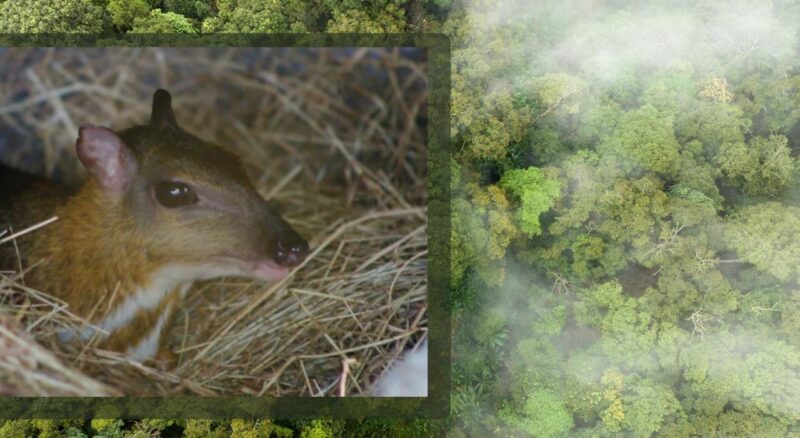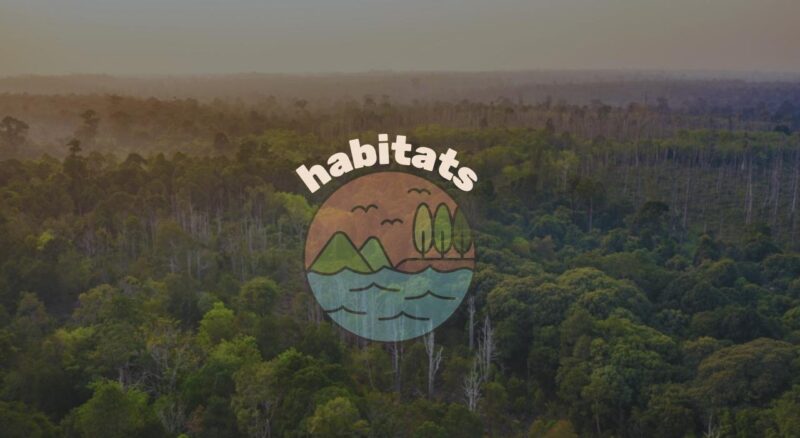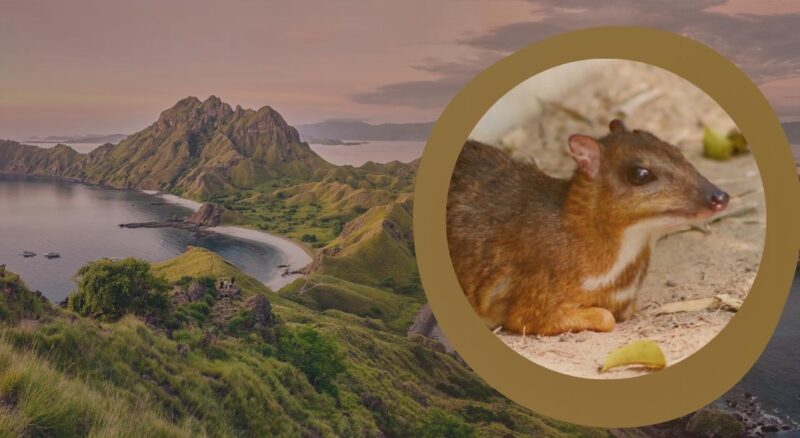When we speak about endangered species, our minds often leap to the giants of the animal kingdom – tigers, elephants, or polar bears.
But among the threatened species in our midst is an often overlooked, yet equally captivating creature: the mouse deer, a tiny ungulate that treads a delicate line between survival and extinction. Sadly, these animals face a variety of threats, from habitat loss to hunting, all of which have contributed to their dwindling numbers.
Their survival is of utmost concern and an indication of the health of the ecosystems they inhabit which is why we’ll take a closer look at the challenges they face, and how conservation efforts are helping to protect them.
What Are Mouse Deer?
Mouse deer, with their petite bodies and delicate legs, look like creatures straight out of a fairy tale. Don’t let their name fool you – these are not rodents, nor are they true deer, but belong to a family called Tragulidae. They are characterized by their small size (standing only about 30 cm tall at the shoulder), elongated bodies, and short legs.
These animals are among the world’s smallest ungulates or hoofed mammals. They inhabit the dense forests of Southeast Asia and Africa, where they lead secretive lives. They prefer habitats with abundant undergrowth for cover, staying close to water sources, as they are excellent swimmers.
Their preference for such specific habitats makes them particularly vulnerable to changes in their environment. There are around ten species of mouse deer recognized today, each distinct yet equally fascinating. They range from the lesser mouse deer, which barely weighs over a kilogram, to the water chevrotain, which can weigh up to 16 kilograms.
Despite their variations, all species share a set of common features that define them as mouse deer, such as their fangs (used by males for fighting), lack of antlers, and solitary habits.
Threats to The Population

The primary threat to mouse deer comes from habitat loss and deforestation. As their forest homes are logged for timber or cleared for agriculture, they are left homeless. This destruction not only results in a loss of shelter but also food resources, causing a drastic decrease in their population.
They are also vulnerable to bushfires that often follow deforestation activities. Hunting and poaching pose another significant threat to their survival. Despite their small size, they are a prized game for hunters because of their meat, which is considered a delicacy in some cultures.
In certain regions, they are also hunted for their skin and other body parts used in traditional medicine. Without strict law enforcement, illegal hunting continues unabated, pushing these species further toward extinction.
Climate change is yet another menace, altering the habitats of mouse deer in ways we are only beginning to understand. Rising temperatures and changes in rainfall patterns could lead to a shift or loss of suitable habitats for these species.
Moreover, extreme weather events like floods and droughts can lead to direct mortality of these animals, as well as the degradation of their habitats.
Current Situation

Numerous protected areas and reserves have been set up to preserve the habitats of mouse deer. These spaces provide the much-needed refuge where they can live without the fear of habitat destruction.
For instance, in Vietnam, several national parks have been established to safeguard the habitat of the critically endangered Large-antlered Muntjac, a relative of mouse deer. Captive breeding programs are another strategy being employed to boost mouse deer numbers.
These programs breed these animals in controlled environments, with the aim of eventually releasing them back into the wild. Such initiatives not only ensure the survival of these species in the short term but also provide a vital genetic pool for future conservation efforts.
However, it’s clear that human activities are at the heart of the decline of mouse deer. Deforestation, hunting, and even climate change are all driven by human actions. Therefore, it’s incumbent on us to adopt more responsible practices if we hope to safeguard the future of these creatures.
Studying Mouse Deer: Research and Monitoring

Conservation efforts rely heavily on solid data about the species they aim to protect. Researchers are studying these animals to gain crucial insights into their population size, behavior, habitat preferences, and vulnerabilities. These findings form the foundation of conservation plans, ensuring that efforts are targeted and effective.
Tracking population trends is a critical part of this research. By monitoring the numbers and distribution of mouse deer over time, scientists can detect early signs of decline, identify the causes, and devise appropriate responses.
This kind of long-term monitoring is invaluable for assessing the impact of conservation efforts and adjusting strategies as necessary. Collaborative initiatives are also essential for successful conservation.
Given that mouse deer habitats often span multiple countries, it is necessary to forge international cooperation and agreements to ensure their protection. The involvement of local communities, too, plays a crucial role in this process.
Conservation Efforts

Amidst the bleak picture, there are glimmers of hope. In recent years, there have been several notable examples of recovering mouse deer populations. For instance, the Philippines’ Visayan Spotted Deer, a close relative to mouse deer, was thought to be extinct until it was rediscovered in the late 20th century.
Since then, its population has been gradually increasing thanks to concerted conservation efforts. Key to such successes is several factors. Rigorous scientific research, effective law enforcement, habitat protection, and local community engagement all contribute to successful conservation.
It is when these elements come together that we see the most significant strides in saving species like mouse deer. However, it’s also important to acknowledge the challenges and obstacles faced by conservation efforts.
From limited funding and political will to the enormity of threats such as climate change, the road to recovery is fraught with difficulties. Identifying these roadblocks and finding innovative solutions is crucial to ensure the long-term sustainability of conservation efforts.
Raising Awareness: The Role of Education

Knowledge is power, and nowhere is this truer than in conservation. By educating the public about mouse deer, we can foster a sense of appreciation and responsibility for these creatures.
Awareness can lead to action, whether it’s supporting conservation organizations, advocating for stricter laws, or simply spreading the word about the plight of these animals. An educated public can also be a strong deterrent to hunting, people may be less inclined to hunt them or purchase products made from them.
It’s also important to provide alternative livelihoods for communities that rely on hunting, ensuring that protecting wildlife doesn’t come at the expense of human welfare. Schools, media, zoos, and museums all play a vital role in this educational endeavor.
Through their reach and influence, they can inspire a new generation of conservationists committed to protecting the world’s biodiversity, including the tiny but remarkable mouse deer.
FAQs:
How Do They Reproduce?
Mouse deer are solitary animals and only come together to mate. The female gives birth to a single fawn after a gestation period of about 4.5 to 6 months.
What Predators Do Mouse Deer Have?
These species are preyed upon by a variety of predators, including large birds, snakes, and larger mammals like leopards and tigers.
Can They Climb Trees?
No, they are not known to climb trees. They prefer to stay on the ground, where they can hide in the underbrush.
Do These Animals Make Good Pets?
No, mouse deer do not make good pets. They are wild animals and do not adapt well to captivity.
Do They Have Antlers?
No, they don’t. Instead, the males have elongated canine teeth that they use for fighting.
Final Thoughts
Mouse deer are a symbol of the beauty and fragility of our natural world. Their struggle for survival is a stark reminder of the challenges faced by wildlife in the Anthropocene. The current status of their populations across the world is precarious.
Their survival is hanging in the balance, threatened by habitat destruction, hunting, and climate change. Yet, despite these daunting challenges, there is still hope. Successful conservation efforts have shown us that with the right measures, it’s possible to turn the tide.
The future of these species depends largely on our actions today. It’s up to us to protect their habitats, curb illegal hunting, and mitigate the impact of climate change. Through research, monitoring, education, and collaboration, we can ensure that these unique creatures continue to inhabit our planet for generations to come.
